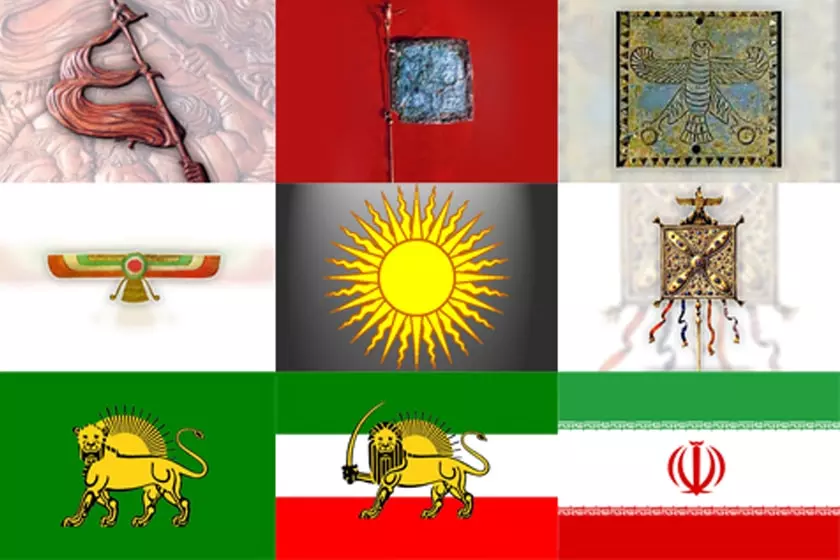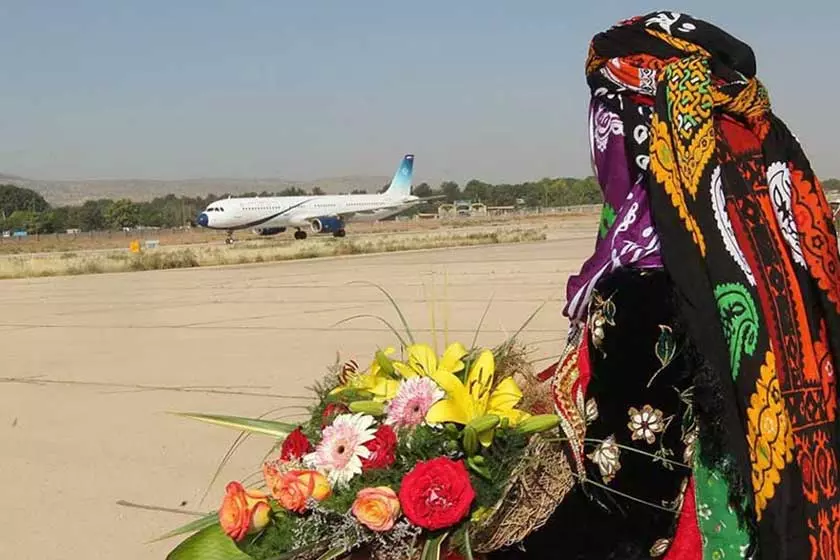Iran flag : An Overview of the Iranian Flag Throughout History
The Iranian flag has undergone significant changes throughout history, shaped by the beliefs and perspectives of each ruling dynasty. This article provides a historical overview of the Iranian flag, tracing its development from ancient times to the present day.
Iranian Flag Throughout History:
The history of the Iranian flag is intertwined with the rise and fall of various dynasties, each imprinting its own modifications based on its ideology. This article explores the evolution of the Iranian flag, highlighting key phases in its transformation.
Ancient Iranian Flag:
The earliest evidence of the Iranian flag dates back to the rebellion led by Kaveh the Blacksmith against the tyrant Zahhak. As Kaveh rallies the people against Zahhak, he symbolizes the uprising by placing his leather apron on a pole. Kaveh’s uprising succeeds, leading to the coronation of Freydoun. Freydoun orders Kaveh’s leather apron to be adorned with red, purple, and yellow dyes, giving rise to the legendary “Derafsh Kaviani.”
The initial Iranian flag featured yellow, purple, and red colors without any specific emblem. Derafsh Kaviani, though a mythical tale, is mentioned in historical documents, suggesting that during the Sassanian and Achaemenid eras, people associated the Iranian flag with the name Derafsh Kaviani. Notably, medieval historians such as Muhammad ibn Jarir al-Tabari described its dimensions as five meters in width and seven meters in length.
Scholars like Abu al-Hasan Masudi also corroborated this in their works, emphasizing that Derafsh Kaviani was crafted from the skin of leopards. It was not adorned with intricate designs, and successive Sassanian kings added jewels to it as a symbol of their reign. However, during the Arab invasion of Iran, Derafsh Kaviani fell into their hands. Caliph Umar bin Khattab, amazed by the jewels, ordered them to be removed, and the banner to be burned.
In summary, historical records and writings indicate that Derafsh Kaviani existed during the Sassanian period, made from leopard and lion skin, with embellishments added by rulers.
The Fate of the Iranian Flag from Tazis to Taziyans
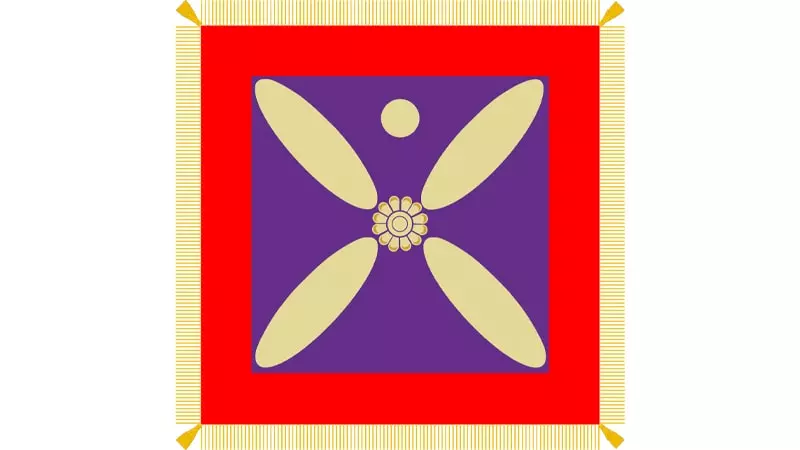
Red Jammegans’ Flag: Supporters of Khurram
After the Tazis’ invasion of Iran, for about 200 years, there was no trace of Derafsh or any flag. Only figures like Abu Muslim Khorasani and Babak Khoramdin, as national heroes, possessed flags. Abu Muslim carried a black flag, and Babak had a red one, and their respective followers were known as Black Jammegans and Red Jammegans. During that time, Islamic scholars declared any depiction or image on flags as forbidden. Consequently, there were no designs or symbols on flags for many years.
The Iranian Flag during the Ghaznavids
In the year 875, the Ghaznavids put an end to the Samanids’ rule. Sultan Mahmud Ghaznavi ordered the depiction of a crescent on a black background for the flag. Later, in 1030, Sultan Mas’ud Ghaznavi, due to his particular fondness for lion hunting, commanded the substitution of the crescent with the image of a lion on the flag. Interestingly, from this time until the Islamic Revolution in Iran, the lion symbol persisted on the flag.
The Iranian Flag during the Seljuks
With the rise of the Khwarazmshahs or Seljuks, the depiction of the sun was added to coins of that era. Historians have mentioned two reasons for using the sun symbol on the Iranian flag during this period:
The lion symbolizes power, courage, and valor, and the sun in the constellation of Leo (Asad). As the sun reaches its zenith during the Leo season, the correlation between the lion (Leo constellation) and the midsummer becomes apparent.
In the Mithraic and Mithraism traditions, the sun holds great sanctity. Therefore, Iranians of that time placed the sun symbol on coins and flags.
Symbol on the Iranian Flag during the Safavids
The symbol on the Iranian flag during the Safavid period, except for the reigns of Shah Ismail I and Shah Tahmasp I, remained the same, featuring the lion and sun. The flag during this period had a green background with gold embroidery of the lion and sun. The lion took various forms on these flags, such as standing, sitting, half-faced, attached, or separated from the sun. Shah Ismail’s flag had a green field with an image of the moon on top. The story of the ancient Iranian flag during Shah Tahmasp’s reign is intriguing.
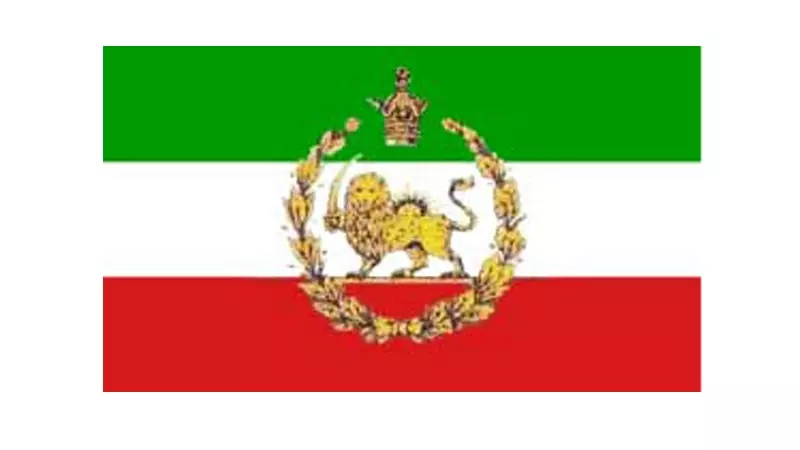
Shah Ismail I’s Flag
Since Shah Tahmasp was born in the month of Farvardin (Aries), he ordered the symbol of Aries, a depiction of a ram, instead of the lion and sun, to be placed on the flag and coins of that time. The Iranian flag during this period was quadrilateral like the Arab flags. Additionally, the French traveler Jean Chardin wrote about the presence of Quranic verses and the symbol of Shamsheer Do Sar (Double-Headed Sword) on their banners, noting the extensive use of such religious symbols as part of the customs of that era.
Nader Shah Afshar’s Era:
Nader Shah Afshar, due to the extensive territorial expansion during his reign and the occupation of numerous regions by his army, brought about significant changes to the Iranian flag. A royal banner or “Derafsh Shahi” was crafted with yellow and red silk, featuring the image of a lion and a sun. The national flag during this period, similar to the current Iranian flag, consisted of three colors: green, white, and red. The symbols on this flag included a walking lion and a half-risen sun, with the phrase “Al-Molkollah” written within.

Iranian Flag during Nader Shah Afshar’s Time:
In images depicting Nader Shah Afshar’s war with Muhammad Gurgani, the king of India, a triangular white flag is observed with a green stripe at the top and a red stripe at the bottom. Additionally, the symbol of a walking lion and a sun with the inscription “Al-Molkollah” can be seen on the flag. As the first time the tricolor of green, white, and red appeared on the national and military flags during this era, historians consider Nader Shah Afshar’s flag as the precursor to the current Iranian flag.
Changes in the Iranian Flag: Qajar Period
The advent of the Qajar dynasty with the rule of Agha Mohammad Khan Qajar paved the way for fundamental changes in the color and shape of the ancient Iranian flag. The first change occurred in the form of the flag, transitioning from a triangular shape to a quadrilateral one. Moreover, Agha Mohammad Khan, due to his longstanding enmity with Nader Shah Afshar, opted for only the red color from the previous tricolor flag. The white circle in the center of the flag contained the symbols of a lion and a sun. A sword was also present in the lion’s hand.
With the reign of Fath-Ali Shah, Iran became the owner of a tricolor flag. These flags included:
A single red flag with a seated lion and a sun behind it, with its rays covering the entire flag.
A white flag for political and diplomatic purposes.
After a diplomatic mission to the court of Tzar, a Russian painter depicted a flag with a white background and the symbols of the sun, lion, and a sword in the middle.
Mohammad Shah Qajar introduced further changes, placing a crown above the sun in the flag. Two flags were used during this period: one with a double-headed sword of Imam Ali (AS) and another with the symbols of a lion and a sun, known as the national and military flag.
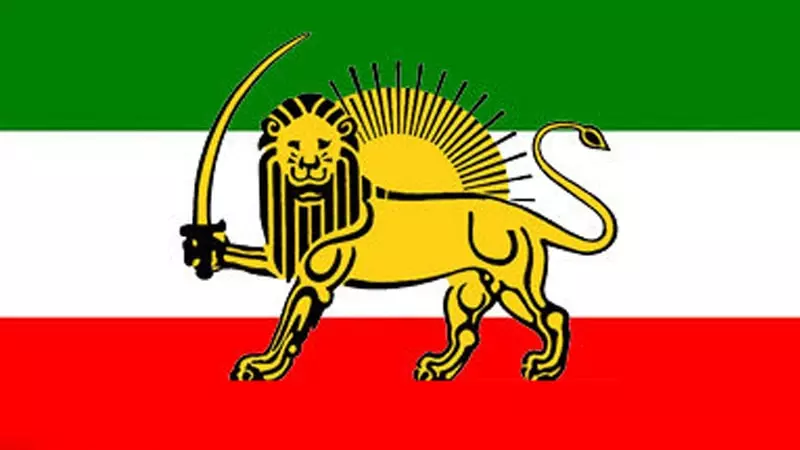
Old Iranian Flag:
Amir Kabir, due to his great admiration for Nader Shah Afshar, ordered the use of the colors from Nader Shah’s era but with a rectangular shape and a white background. Green stripes were placed at the top edge, and red stripes at the bottom edge. The symbols of a lion and a sun, as before, were positioned in the center of the flag. Amir Kabir effectively combined the features of Fath-Ali Shah’s tricolor flags, and the current design of the Iranian flag was born.
Constitutional Revolution and Its Impact on the Ancient Iranian Flag
The shape and color of the Iranian flag during the Constitutional Revolution were shaped by the perspectives of the clergy and intellectuals of that era. After the Constitutional movement triumphed in Iran and the decision to establish a parliament was made, representatives of the people in the parliament began drafting the constitutional and supplementary laws. They approved the following provision in the fifth article of the constitution:
“The official colors of the Iranian flag are green, white, and red, featuring the symbols of a lion and a sun.”
This approval was very general, and details such as the arrangement of colors, the posture of the lion and sun, and other specifics were not mentioned. The clergy present in the parliament declared the use of images on the flag as forbidden. They considered the green color of the flag as a religious color, associated with the Prophet Muhammad (PBUH), and placed it at the top of the flag. White was considered the favorite color of Zoroastrians, symbolizing purity, peace, and reconciliation. The red color of the flag was dedicated to the blood of Islamic martyrs and the casualties of the Constitutional Revolution.
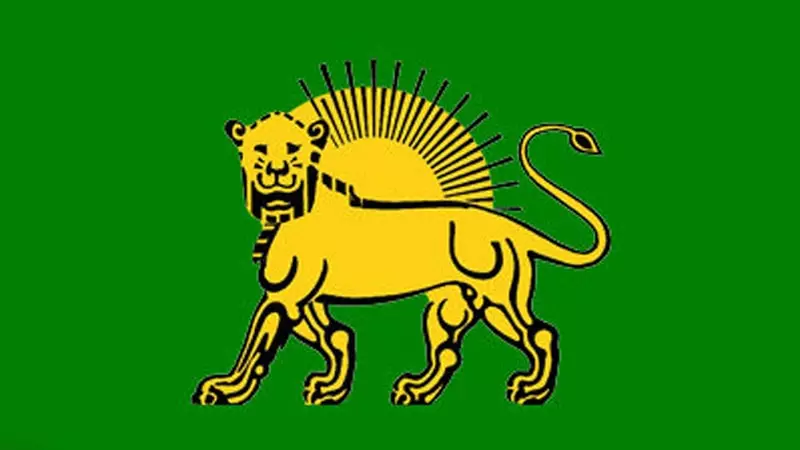
When it came to the lion and the sun, the intellectuals in the parliament related the presence of these symbols to the victory of the Constitutional Revolution in the month of Mordad, corresponding to the zodiac sign of Leo. Additionally, as most Shia Muslims revere Imam Ali (AS), and his title is Asadullah (Lion of God), the lion is considered a symbol of both the month of Mordad and Imam Ali (AS). The sword of Zulfiqar, associated with Imam Ali, was also placed in the hand of the lion. To justify the presence of the sun symbol, it was linked to the victory of the Constitutional Revolution in the middle of the month of Mordad, where the sun is at its peak of heat and power, positioned behind the lion symbol. Thus, the national flag of Iran was officially recognized for the first time in the constitutional law as a symbol of independence and national sovereignty.
Flag of Iran during the Pahlavi Era:
During the reign of Mohammad Reza Pahlavi, Iran had three official flags:
The national flag, consisting of three equal parts of green, white, and red.
The state flag, which, in addition to the features of the national flag, also included the symbols of a lion and a sun in the center and was used in government agencies, administrative affairs, and foreign affairs.
The royal flag, which had a light blue (sky-blue) color and featured the Pahlavi crown in the top-left corner.
Iranian Flag Symbol:

In the original 1906 Constitutional Law, which was ratified in 1979, many details were mentioned regarding the Iranian flag. The flag is composed of three colors: green, symbolizing Islam; white, symbolizing peace; and red, symbolizing the blood of martyrs and bravery. The emblem of the Islamic Republic of Iran is placed in the center of the flag. This emblem is a combination of the words “Allah” and “La ilaha illallah” and the symbol of a tulip, representing the blood of the martyrs. Twenty-two instances of “Allahu Akbar” in white, symbolizing the victory of the Islamic Revolution on the 22nd of Bahman, are seen at the bottom of the green border and at the top of the red border.
Frequently Asked Questions:
In which era was the first Iranian flag formed?
The first signs of the existence of the Iranian flag date back to the uprising of Kaveh the blacksmith against Zahhak.
How did the lion symbol contribute to the Iranian flag?
In 410 AD, Sultan Masoud Ghaznavi ordered the image of a lion to be placed on the flag instead of the moon.
What was the significance of the sun symbol on the Iranian flag?
In the Mithraism and Mitraic symbolism, the sun holds great sanctity, and for this reason, Iranians of that time placed the sun symbol on coins and flags.
Who was the innovator of the current Iranian flag?
Amir Kabir, by utilizing the features of Nader Shah’s and Fath-Ali Shah’s flags, designed the current form of the Iranian flag.

